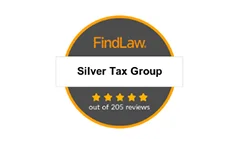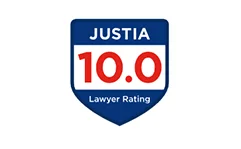A Simple Guide To The IRS Form 433-D Installment Agreement

When it comes to taxes, individuals and businesses can come across the same problem: not being able to afford a tax debt, and fearing the repercussions. The good news is that business owners with no delinquent employment taxes can use Internal Revenue Service (IRS) Form 433-D to find relief, as can those who are out-of-business sole proprietors.
What is 433-D, and how does it keep you from being in hot water with the IRS? The form is your basic installment agreement, which enables you to pay down your debt in more bite-sized amounts. You can’t just file Form 433-D and call it good, however. As with all IRS red tape, there are a few forms to file before you are approved for installment payments.
Benefits of an IRS Installment Agreement

- The major benefit to an installment agreement is, of course, that it gives you more time to pay off your debt.
- Once an installment agreement is approved and in place, the IRS will stop collection attempts.
Why You May Need to File a 433-D Installment Agreement

If you’re still in business and fighting collections, all is not lost. You may still be able to file a 433-D in certain cases. Those revenuers, aka, the powers-that-be, will review individual cases and let you know if you can file. If approved, the IRS will send out a notice alerting you to submit Form 433-D during the collection process.
433-D Installment Agreement Qualifications

- Apply for an installment agreement if you cannot pay the full amount on your tax return. You can attach the agreement to your return or fill it out online or mail it in.
- Apply for an installment agreement if you received a notice from the IRS and cannot afford to pay the total due.
- Generally, you cannot afford to pay your tax bill but can pay it off in monthly installments over a 72 month or less time frame.
- To apply for an installment agreement, all past tax returns must be filed.
- You should not have a current installment agreement in place or have had one in the last five years.
Note: There may be scenarios where you should not apply. For example, you should contact the IRS first if you already have an agreement in place, if you are in the middle of bankruptcy, or if you want to submit an offer in compromise. If you’re unsure, our tax professionals can help can guide you.
Other Forms to File Before a 433-D Installment Agreement

Buckle your seatbelts, we’ll make life easy. First, you must file Form 9465 which is the actual request to file an installment agreement. If you’ve filed the 9465 form, the IRS will already have viewed your already filled out Form 433-A or Form 433-F, which have your financial information on them.
It’s important to understand the terms of any document you submit, though — especially if it’s going to impact a tax debt repayment schedule.
It is only when your information has been reviewed and approved that you can finally fill out and submit IRS 433-D. Okay, enough forms and numbers, let’s get to the terms and agreements.
433-D’s Terms and Agreement FAQs

Most people groan at fine print legalese, so we’ve made the Terms and Agreements section of the 433-D agreement easy to digest. Once you complete and submit the 433-D, the taxpayer—that’s you—agrees to these (layman’s) terms:
What If My Ability to Pay Changes?
If your current financial condition changes, this agreement may change accordingly. Your current financial condition does not mean your current financial situation. Situations can change by the day. Your financial condition is longer-term. That’s the difference between getting a $1000 rebate one week and getting a new long-term contract the next.
You have to provide updated financial information whenever it is requested. This updated information may mean either a modification of or a termination of the 433-D agreement if your financial condition has significantly changed.
Note: You still must file federal returns.
What Are Your Liabilities?
Once you file 433-D, the agreement will remain in effect until you pay off what you owe—in full—including penalties and interest. If the statute of limitations (the length of time you can legally pay your debt) expires, this agreement will no longer be in effect.Currently, the statute of limitations for the IRS to collect your debt is 10 years, although it can be extended. If your installment agreement is terminated, you will receive written notice from the IRS prior to the termination.
Will I Get a Federal Tax Refund?
Uncle Sam will apply any federal tax refunds or overpayments to your balance, including the shared responsibility payment under the Affordable Care Act. However, this has been reduced to zero for your 2019 taxes under the Tax Cuts and Jobs Act which took effect on December 31, 2018.
Your federal tax refund offset will continue each year until your debt is marked paid in full or until the mandatory collection period has expired.
Do I Pay The $225 or $43 User Fee?
User fees are the fees the IRS collects to provide a service. It is legal and it is the law. User fees are reviewed every couple of years. Currently, the IRS will deduct a $225 user fee from your first installment payment unless you qualify as low-income. Low income is defined as at or below 250 percent of the Federal poverty guidelines. If you qualify, your user fees are reduced to $43. Direct debit users pay $107.
Why Do Auto-Debit Agreements Get a Break?
Auto-debits make for less paperwork, which is why you get a reduced fee. The $43 user fee will be waived if you agree to send your payments electronically. You have to fill out the Direct Debit section of 433-D with your banking information before you turn in your agreement.
When Do You Need to Make Payments?
The IRS expects payment by the due date. That’s the monthly due date on the agreement. If you can’t make your payment as scheduled, contact them immediately if not sooner.
What Happens if You Default on Your Installment Agreement?

The terms and agreements outline what can happen if you default on your payment plan. The IRS may terminate your installment agreement in certain situations. While “default” is a bit frightening and certainly to be avoided if possible, you have to remember that the IRS wants you to fulfill your obligations. It will work with you as much as it can, but it will ensure you pay what is owed one way or another.
Reasons the IRS May Terminate an Installment Agreement
- You miss your agreed-upon monthly payments.
- You fail to pay your other federal tax debts by their due dates.
- You don’t provide financial information as requested by the IRS.
What to Know about Making 433-D Installment Payments
- If you can’t make a payment, don’t ignore it and wait to see what happens.
- You should contact the IRS or your tax attorneys immediately about your options.
- If you default, one of the best case scenarios is that the IRS will simply reinstate the agreement.
- If this happens, you can pick up where you left off — with fees and penalties, of course.
- There is an $89 reinstatement fee the IRS may deduct from your payments after the 433-D is reinstated.
- All payments will be applied in the way that best suits the debt owed to the IRS.
- That typically means the payment goes toward the oldest tax period to keep your agreement within the statute of limitations.
A default can get much more serious,however. If your agreement is terminated and you don’t take action to reinstate it — or if your reinstatement request is refused — the IRS may seize your property or levy your income, bank accounts, or other assets to collect the entire amount owed. This does not include the Individual Shared Responsibility Payment outlined by the ACA. Furthermore, the IRS can file a Notice of Federal Tax Lien, which is public information and can impact your credit rating. Once again, the Individual Shared Responsibility Payment will not be considered for this filing.
IRS Form 433-D Instructions

- Determine what you owe. This should include any past debt as well as the current amount due.
- File Form 9465 Installment Agreement Request. A full set of instructions can be found on the IRS website.
- If your tax bill is $10,000 or less, you will be automatically approved if you can pay it off over a three year period, have no installment agreement in place or have not had one in place for the last five years, and all past returns have been filed.
- If your tax bill is $50,000 or less, this may be filed online and is subject to approval.
- Over $50,000, you will complete Form 9465, and additionally complete 433-F Collection Information Statement.
It’s important to fill out the forms thoroughly and correctly to avoid costly mistakes and delays. IRS Form 433-D requires several lines of information that you need to include, parts of which may have already been filled out for you by the IRS:
Basic Information
This includes your name, address, phone number, and Social Security number. If you file jointly with a spouse, you will also include your spouse’s name. If you need to increase your withholding, you can check the box to submit a new W-4 to your employer.
Bank Information
This is your financial institution’s name and address.
Tax Information
This will be the form number for the type of tax you owe, tax periods you owe, total amount owed, how much you’re going to pay as an initial payment, how much you’re going to pay per monthly installment, and when you intend to start paying it.
You can also choose a day of the month when you would like your additional payments to be made, which is when the direct debit will occur or the date by which checks need to be received. If you have agreed to any payment increases or decreases as time goes on, you will also make note of these on the provided lines.
Direct Debit Information
This is the preferred method of payment by the IRS. It is a debit directly from your bank account on the same day each month. There is less risk of forgotten or lost payments, which explains why it is less expensive to set up an agreement when direct debit is used. Attach a voided check or fill in your account and routing numbers to have your payments automatically withdrawn each month. This may be an advantage, as the user fee may be waived for you depending upon your income, and doing so reduces your risk of late or forgotten payments — as long as you can ensure the required funds will be available in your account every month for withdrawal. If you cannot make a direct debit agreement, be sure to check the box that says, “I am unable to make debit payments.” If you do not check this box, it indicates you can make direct debit payments, but are choosing not to.
Initial and Signature
Without your initials after the tax information and your signature and date at the bottom, the form will not be considered complete.
Where to Mail IRS Form 433-D

After you check to ensure you’ve filled out the form completely, send it to the address on your form in the “For Assistance” box or as indicated in the letter that came with your form. You may call the number in the “For Assistance” box if you’re unsure about where to send it, but it is a good idea to send Form 433-D via certified mail so you can track its travels and arrival. It can take up to two months for the IRS to set up the direct debit process. You may need to pay your first couple of payments by check.
- Credit Cards can be set up as an automatic charge each month as well. Just be sure that when your card renews, you make that change on your agreement or you could be in default.
Note: When Paying via Check
Your check should be made payable to “United States Treasury” for the agreed-upon monthly payment amount. If you intend to pay double and skip a payment later, you should contact the IRS first. Include your Social Security number or employee identification number (EIN) on the check. If you received a reminder notice, include it with the check. If not, write the type of tax, the tax period you’re paying (which should be the oldest unpaid period on the agreement), and “Installment Agreement” on the check.
What are the Costs for an Installment Agreement?

- The IRS will charge interest and penalties on the balance. The IRS will compound interest daily equal to the short term federal funds interest rate plus 3%, calculated quarterly. And even if you make your payments on time, you will incur a 0.25% penalty on the balance. It is a bit difficult to calculate on your own, so if you don’t have a letter in hand, your tax professional will contact the IRS to get the amount due.
- There are fees involved in setting up the installment plan.
- $31 for online agreement plus direct debit
- $107 for agreement not completed online with direct debit
- $149 for online agreement with no direct debit
- $225 for no online agreement and no direct debit
Some provisions may be made to the costs for an agreement if the taxpayer qualifies for low income status.
Installment Agreement Tips & Reminders

- Pay On Time! Once you have an agreement in place, it is essential to make your payments in full and on time. Failure to do this could revoke your agreement and collection procedures could begin or resume. If mailing, give the payment ample time to be delivered by the due date. If circumstances make it impossible for your payment to be made timely and completely, contact the IRS proactively.
- File On Time! Your tax returns must be filed each year on time for your agreement to remain intact.
- Don’t Expect a Refund. Until your tax debt is satisfied, any refund amount will be applied to your debt.
- Don’t Panic! Lucky for you, we are experts at working with the Internal Revenue Service. We will answer your questions and set you at ease by doing what we do best: your taxes.
The Bottom Line: IRS 433-D Installment Agreement

If you owe more than $25,000 in taxes or collections, it may be in your best interest to file an IRS Form 433-D installment agreement to get you or your company back into the IRS’s good graces. Filing may keep your small business lien-free, for example, and may enable you to legally and manageably pay down your tax debt.
Contact Silver Tax Group today to speak with an expert about the IRS Form 433-D and whether it’s the right choice for you.
Need to File IRS Form 433-D?
We’ll discuss your current financial situation and put a plan together to help you file the required forms and documents to get you in good standing with the IRS.





Free Consultation 24/7
Chad Silver
Attorney

Silver Tax Group Locations


777 South Flagler Drive
Suite 800 – West Tower
West Palm Beach FL 33401

4005 Guadalupe St
Suite C
Austin, TX 78751



